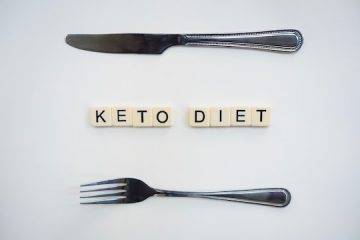Are you looking for a way to improve your health and lose weight? If so, you may be interested in combining two popular diets: intermittent fasting and the ketogenic diet. While each diet has its own benefits, combining keto and intermittent fasting may result in even greater health benefits.
Intermittent fasting involves restricting your calorie intake for a certain period of time each day or week. The ketogenic diet involves eating high-fat, low-carbohydrate foods to enter a state of ketosis, in which your body burns fat for energy instead of glucose. By combining these diets, you can enhance your body’s ability to burn fat and improve your overall health.
Table of Contents
Combining Keto and Intermittent Fasting for Weight Loss 2023
When you combine intermittent fasting with the ketogenic diet, you’re essentially eating a high-fat, low-carb diet within a specific eating window. This can help you get into ketosis more quickly and may lead to faster weight loss.
However, there are some risks associated with combining intermittent fasting and the ketogenic diet. For example, you may experience symptoms of the keto flu, such as headaches, fatigue, and irritability, as your body adjusts to burning fat for fuel instead of carbs. It’s also important to make sure you’re getting enough nutrients, as both the ketogenic diet and intermittent fasting can be restrictive.
In this article, we’ll explore the benefits and risks of combining intermittent fasting with a ketogenic diet.
Intermittent Fasting: What is it and How Does it Work?
Intermittent fasting is an eating pattern that involves alternating periods of fasting and eating. There are several ways to do intermittent fasting, including:
- 16/8 Method: This involves fasting for 16 hours each day and eating during an 8-hour window. For example, you might eat all your meals between 12 pm and 8 pm and then fast until noon the next day.
- 5:2 Diet: This involves eating normally for 5 days and restricting calorie intake to 500-600 calories for 2 non-consecutive days each week.
- Alternate-Day Fasting: This involves fasting every other day and eating normally on non-fasting days.
Intermittent fasting works by limiting the number of calories you consume, which can lead to weight loss and improved health. When you fast, your body enters a state of ketosis, which is similar to the state achieved through the ketogenic diet.
The Ketogenic Diet: What is it and How Does it Work?
The ketogenic diet is a high-fat, low-carbohydrate diet that has been shown to promote weight loss, improve blood sugar control, and reduce the risk of certain diseases. The goal of the ketogenic diet is to enter a state of ketosis, in which your body burns fat for energy instead of glucose.
To follow the ketogenic diet, you’ll need to restrict your carbohydrate intake to less than 50 grams per day and increase your fat intake to around 70-80% of your daily calories. This can be achieved by eating foods such as meats, fish, nuts, seeds, and healthy fats like avocado and coconut oil.
Benefits of Combining Keto and Intermittent Fasting
By combining keto and intermittent fasting, you can reap even greater health benefits.
Some of the benefits of this combination include:
- Improved weight loss: The combination of these two diets may result in greater weight loss than either diet alone. By restricting your calorie intake and entering a state of ketosis, your body can burn fat more efficiently.
- Reduced inflammation: Both intermittent fasting and the ketogenic diet have been shown to reduce inflammation in the body, which can lead to improved health and a reduced risk of chronic diseases.
- Improved brain function: Both diets have been shown to improve brain function, including memory, concentration, and cognitive performance.
- Reduced risk of disease: By following both diets, you can reduce your risk of diseases such as diabetes, heart disease, and certain cancers.
Risks of Combining Intermittent Fasting and the Ketogenic Diet
While there are many benefits to combining intermittent fasting and the ketogenic diet, there are also some potential risks to be aware of. Some of the risks include:
- Restricting your calorie and carbohydrate intake can lead to fatigue, especially in the beginning stages of the diet.
- Difficulty sticking to the diet: Combining two diets can be challenging, and it may be difficult to stick to the plan long-term.
- Increased risk of side effects: Some people may experience side effects such as constipation, headaches, and bad breath while following the ketogenic diet.
Implementing Keto and Intermittent Fasting
If you’re interested in combining intermittent fasting and the ketogenic diet, it’s important to do so under the guidance of a healthcare professional. Here are some tips to help you get started:
- Start slowly: Begin by implementing one diet at a time and gradually introduce the other diet. For example, start with intermittent fasting and then introduce the ketogenic diet once your body has adjusted.
- Keep track of your progress: Use a food journal or tracking app to monitor your progress and make adjustments as needed.
- Stay hydrated: Drink plenty of water to stay hydrated and help flush out toxins from your body.
- Focus on whole foods: Choose whole, nutrient-dense foods to ensure that you’re getting all of the essential nutrients your body needs.
- Be patient: It may take time for your body to adjust to the new diet, so be patient and give yourself time to adapt.
Conclusion
Combining keto and intermittent fasting can be a powerful tool for improving your health and losing weight. While there are some risks to be aware of, the benefits of this combination are numerous. By working with a healthcare professional and following the tips outlined in this article, you can successfully implement these diets into your daily routine and achieve your health and weight loss goals.
Thanks for visiting my Blog.
Disclaimer: “As an Amazon Associate I earn from qualifying purchases.”


